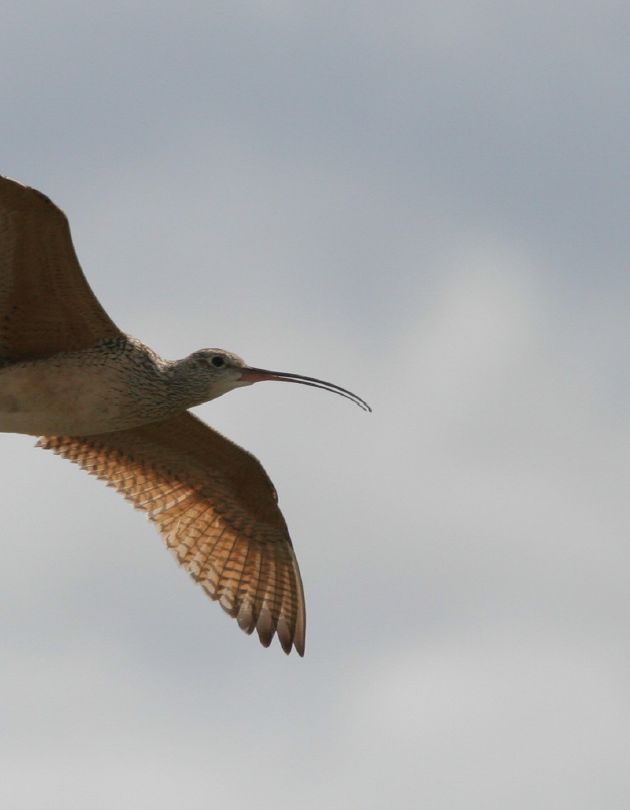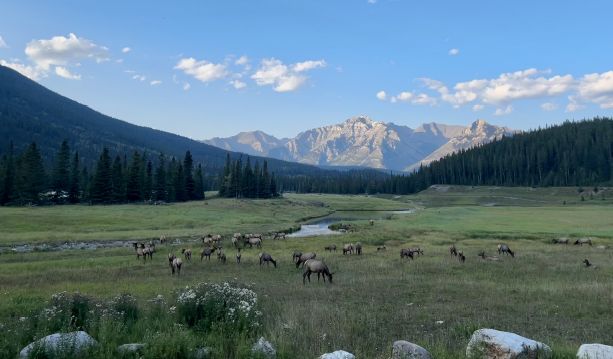
Canada’s Big Biodiversity Promise
November 18, 2024
- •
- •
- •
The Biodiversity Strategy and Nature Accountability Bill represent an improvement, but is it enough to protect and recover Canada’s biodiversity?
Long-billed curlews were listed as a Special Concern species in 2002 by the Committee on the Status of Endangered Wildlife in Canada. Photos © Cliff Wallis
By Ruiping Luo
Read the PDF version here.
Nearly two years ago, Canada, alongside 195 other countries, signed the Kunming-Montreal Global Biodiversity Framework, an international agreement under the Convention on Biological Diversity. It set goals and targets aimed at reversing biodiversity decline.
To fulfill international commitments, Canada has produced the 2030 National Biodiversity Strategy, a plan for how Canada will meet the goals of the Kunming-Montreal framework and protect our nation’s biodiversity. More excitingly, the Nature Accountability Bill has been introduced into Parliament. If passed, the bill would hold the federal government accountable for reporting progress and meeting its commitments.
The Biodiversity Strategy and Nature Accountability Bill represent an improvement, but is it enough to protect and recover Canada’s biodiversity?
The Biodiversity Crisis
Canada, as with the rest of the world, is facing a biodiversity crisis. Globally, natural ecosystems have declined by nearly 50 percent, and roughly a quarter of known species are at risk of extinction. Canada is not doing much better — less than 30 percent of land habitats are still considered wild, and among species assessed at the national level, one in five were at risk, with 135 species already presumed or likely extirpated.
As biodiversity is lost, we are also losing the functionality of ecosystems and many of the services we rely on, from soil formation to filtering of air and water. Ecosystem services worldwide are worth an estimated $125 trillion US dollars (over $170 trillion Canadian dollars), according to the World Wildlife Fund’s Living Planet Index 2018. With the loss of biodiversity, we risk losing the health of our soils, our water and our air. The declining health of our environment will affect our ability to grow or raise food, our access to clean water and our physical and mental health.
Still, Canada is one of the world’s last strongholds for biodiversity. We hold the second-largest area of wilderness in the world and have over 50,000 species across the country. How Canada responds to the biodiversity crisis will have global consequences.
Some of the greatest threats to biodiversity include habitat loss and pollution. Every year, more native prairie, old growth forests, peatlands, and other essential ecosystems are lost to development (like expanding cities and roads), resource extraction (such as mining and drilling operations) and land conversion (for farming and irrigation). Pollution, whether toxic chemical spills or deliberate use of pesticides and fertilizers, can harm even more land and species. Protecting the remaining high biodiversity areas is fundamental to reducing biodiversity decline; we cannot afford to lose any more critical habitat.
The biodiversity crisis also cannot be entirely separated from climate change. Climate change is shifting temperatures and weather patterns, bringing more extreme weather and natural disasters such as floods, droughts, fires and storms. These changes are threatening the survival of many species, impacting migration and range as plants and animals are forced to adapt to the new environment. Invasive species can take advantage of and add to the effects of climate change, causing more stress on the ecosystem.
Historically, progress has been disappointing. Of 19 national biodiversity targets adopted for 2020, Canada met less than half (8 of 19), and partially met or made progress towards just over a third (7 of 19). Meanwhile, over 800 species have been assessed to be at-risk, and of these species, many have decline by over 50 percent in the past few decades. Urgent action is needed to protect our nation’s biodiversity.
National Biodiversity Strategy
Canada’s 2030 National Biodiversity Strategy sets out an ambitious plan that aligns with the goals of the Kunming-Montreal Global Biodiversity Framework. The strategy does well in recognizing Indigenous leadership and a need for diverse voices, and in emphasizing a need for collaboration across all sectors and levels of government. It is vital that inclusion and collaboration is included throughout planning, as well as implementation, reclamation and broader policy decisions.
Another strength of the new strategy is in prioritizing protection of representative and well-connected high biodiversity areas. This is essential, since healthy, biodiverse ecosystems can take hundreds or thousands of years to develop, and restoration is costly, time-consuming, and not guaranteed to succeed. Protected areas must be representative of Canada’s ecosystems; currently, a majority of Canada’s — and Alberta’s — protected areas are in the less populated north, so the northern landscapes are well-represented. This system leaves the southern ecosystems, such as the prairies, vulnerable to exploitation. As these less protected ecosystems are already some of the most degraded, expanding protected areas must focus on the under-represented south.
Canada also promised to phase out incentives that are harmful to biodiversity, including “inefficient fossil fuel subsidies.” Since fossil fuels contribute heavily to both biodiversity loss and climate change — one of the leading threats to biodiversity — reducing fossil fuel use is crucial. In 2022, the International Monetary Fund found Canada had given $2 billion in explicit fossil fuel subsidies. Another $36 billion was estimated in implicit costs. However, previous efforts to reduce incentives have been largely ineffective, leaving loopholes that continue to funnel money into the pockets of major oil and gas corporations. These incentives make it cheaper to burn oil and gas, encouraging fossil fuel development and slowing the transition to clean energy.
Similarly, there are promises for reducing pollution, including from pesticides, fertilizers, plastics and chemicals. Pollution is one of the five greatest causes of biodiversity decline, especially for aquatic species, and can destabilize ecosystems. An estimated 80 percent of endangered species in America were threatened by pesticide use, according to the United States Environmental Protection Agency, and hundreds of thousands of birds are estimated to die from oil spills off Canada’s coasts each year. Yet, Canada is often lagging on pollution regulation. For instance, while neonicotinoids have been banned in Europe since 2018, the pesticide is still used extensively in Canada. Responses and reporting for chemical spills are often slow, and unable to prevent extensive ecosystem damage. To be effective, we need to stronger regulations and monitoring around pollutants, especially for chemicals proven to be highly toxic and damaging for threatened species.
Restoration is another important aspect discussed in the strategy. While protecting biodiverse lands is more effective, rebuilding of degraded lands is also needed, especially in ecosystems that have already been heavily lost or damaged, and where the remaining habitat cannot support the species that rely on them. However, restoration should not be used to justify development and destruction of native habitats. The National Biodiversity Strategy approaches restoration by promising investment, but also using existing regulatory and policy frameworks to mitigate degradation. These frameworks often allow offsets — where habitat is restored, enhanced or created in exchange for destroying productive, healthy ecosystems. Most of them have proven largely ineffective at protecting endangered ecosystems. For restoration to be effective, we need to be building healthier and more productive habitat, not using it as a platitude for continued habitat destruction.
Finally, the value of our natural environment should focus on more than profit. Sustainable use should be about the sustainability of the entire ecosystem, not only about how much we can harvest; this means leaving enough for other species too. For example, setting aside water in rivers for fish and other aquatic species to survive, or leaving enough trees to sustain the plants and animals that rely on those forests. Similarly, socio-economic benefits of ecosystems are often overlooked. Beyond their role in tourism and recreation and their importance in sustaining Canada’s economy (i.e. through forestry, fishing, agriculture, etc.), having a healthy environment provides us with clean air and water, regulates temperature, reduces flood and drought, produces healthy soil and supports pollinators and other important wildlife. It is also central to Indigenous cultures and supports physical and mental health for all peoples. It is time we acknowledged the inherent value of ecosystems; beyond just the material resources these lands provide.
Nature Accountability Bill
The Nature Accountability Bill was introduced to promote accountability and track progress. Under the proposed bill, Canada’s Minister of Environment would be required to establish a National Biodiversity Strategy, reporting measures taken or proposed to reach global biodiversity targets. The minister must also submit reports detailing Canada’s progress on meeting targets and form an advisory committee. These actions should be undertaken using the best available science and respecting the rights and knowledge of Indigenous Peoples.
If passed, Canada would be one of the few countries in the world to require nature accountability. The federal environment minister would be required to keep working towards long-term biodiversity goals.
However, the proposed bill would act only at a federal level. In Canada, most land management is under provincial jurisdiction, so the cooperation of the provinces is vital to large-scale environmental protection. The Nature Accountability Bill will not be enough without the cooperation of the provinces.
Alberta’s stance on biodiversity
At the time of writing, Alberta has still not agreed to the Kunming-Montreal Global Biodiversity Framework, nor has the province made commitments towards halting and reversing biodiversity loss. In contrast, Alberta has repeatedly challenged the National Biodiversity Strategy and Nature Accountability Bill, and has moved to encourage industrial development, including oil and gas expansion, at the cost of preserving biodiversity.
Of over 800 species determined to be at-risk in Canada, 115 are found in Alberta, and many of these populations are declining. At least five species have already been lost from Alberta’s landscape, and more are on the verge of extirpation or extinction. Human activity covers 31 percent of the province, according to the Alberta Biodiversity Monitoring Institute (ABMI), with much of the remaining lands heavily fragmented and degraded. This human footprint expanded 15 percent (28,292 km2) between 2000 and 2021, an area nearly 35 times the size of Calgary. Yet, Alberta has not increased protection; 14.8 percent of Alberta was protected in 2018, expanding to a meagre 15.4 percent in 2021. With industrial, urban and agricultural development continuing to encroach on the remnant habitat of rapidly declining species, protecting the remaining land is crucial, or we risk losing even more of Alberta’s unique and vital species.
The 2030 National Biodiversity Strategy sets some ambitious targets for Canada, but ambition is needed if we want a chance to halt and reverse the biodiversity decline. There remain many barriers to implementing the strategy, one of the most significant being the reticence of provinces, such as Alberta, to cooperate. Biodiversity loss impacts us all, not only in the loss of species, but also in the loss of environmental condition, ecosystem services and human health. We need action to stop biodiversity loss now, from Canada and from Alberta.

